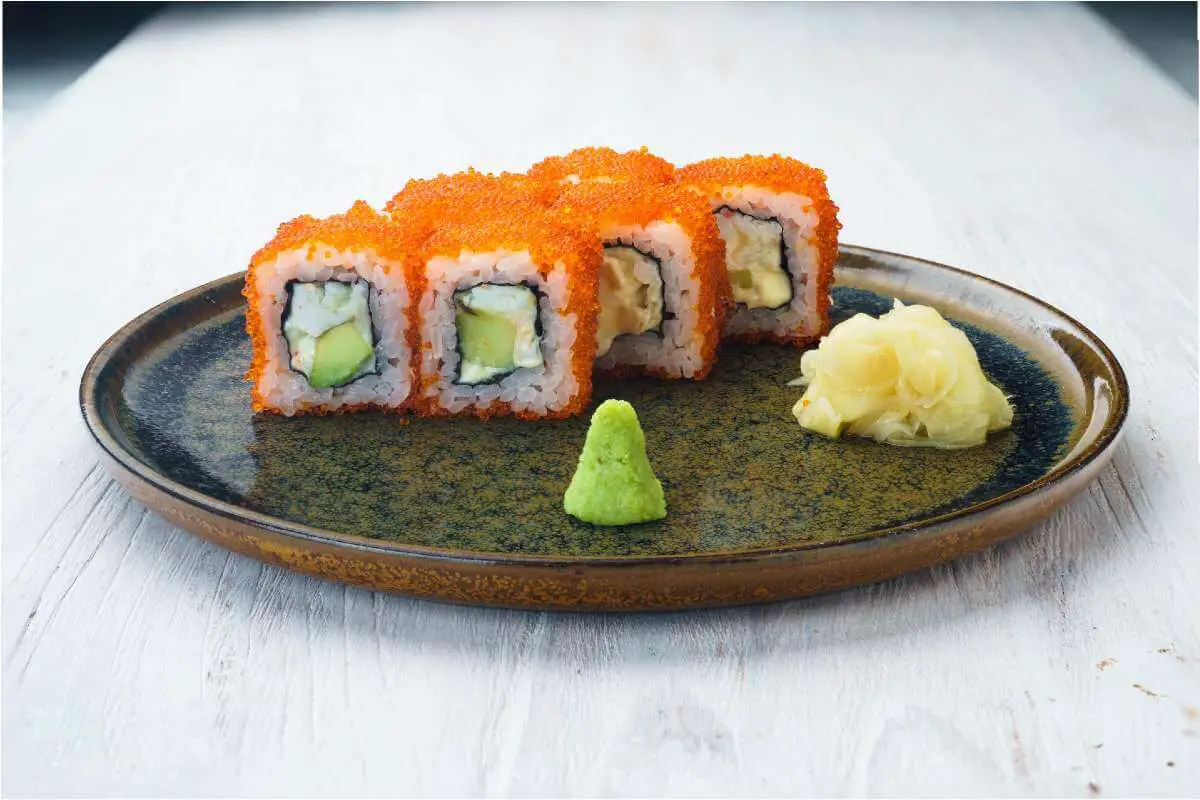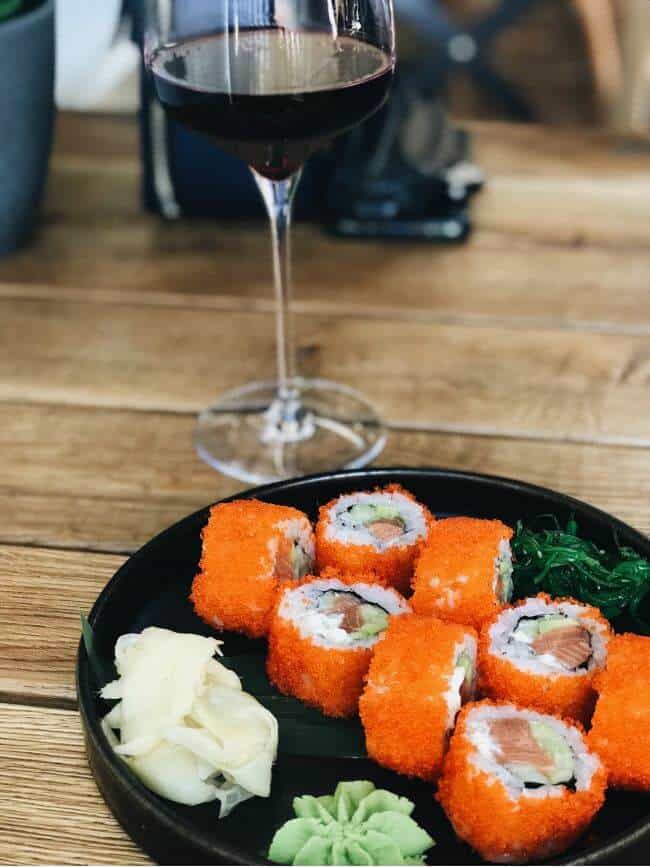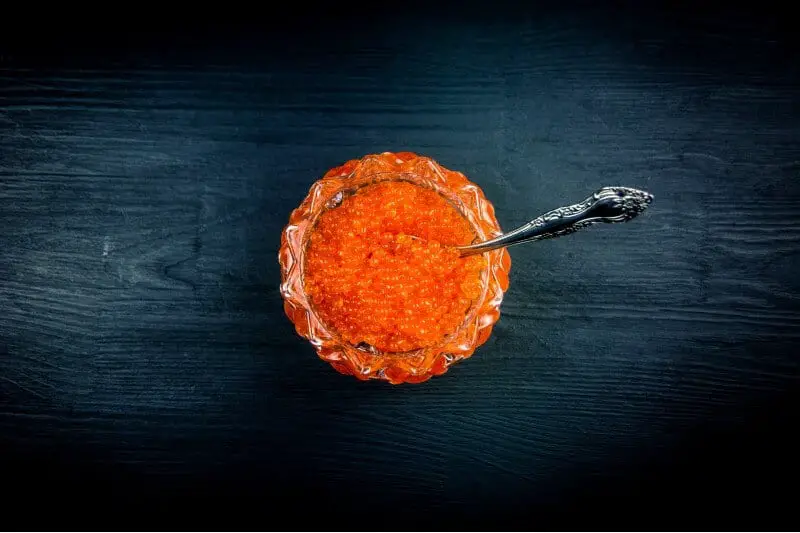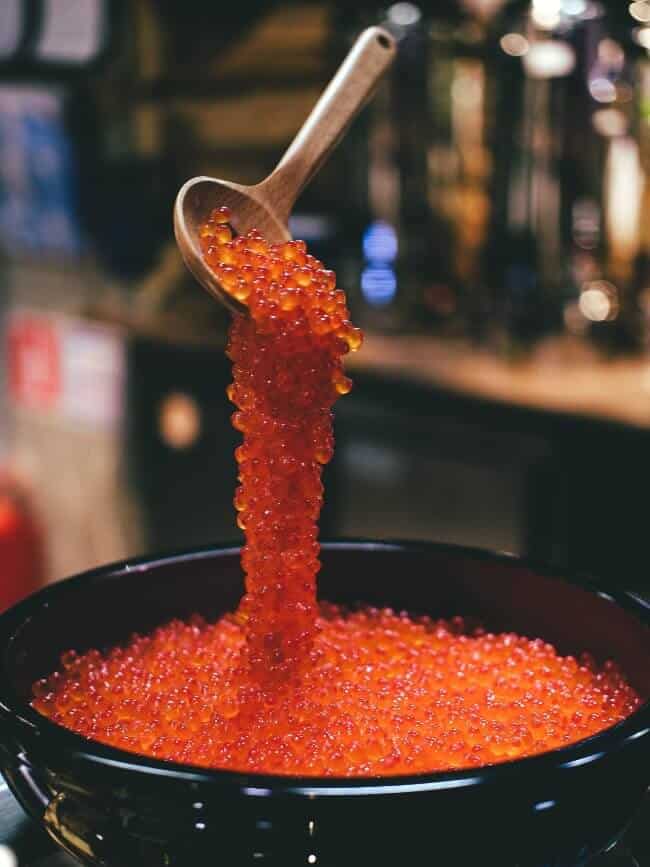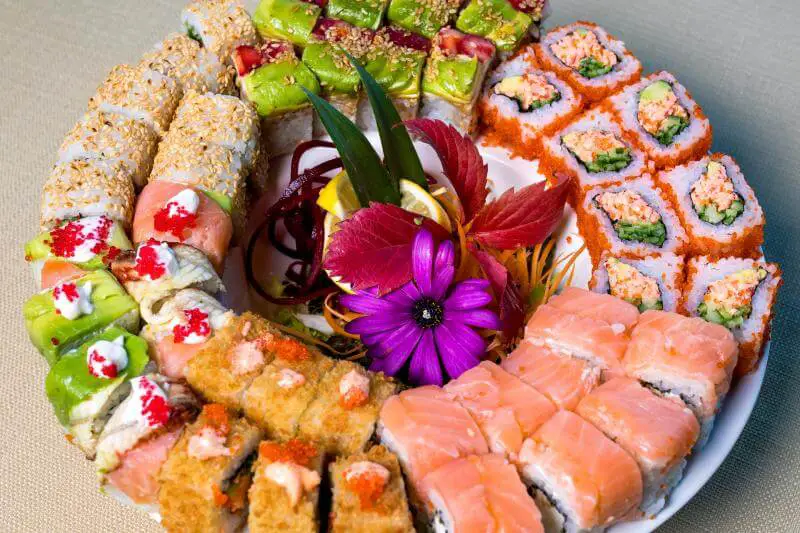I had a maki and sushi spree the other week. Don’t judge just yet – being in Japan doesn’t make one lose his or her appetite for the cuisine (or anywhere in the world, for that matter).
Why the sudden craving, I couldn’t even remember.
“Are you pregnant?”, my husband asks. I laughed it off as we settled into the car to head to a local sushi bar.
So that was my third consecutive night visiting that place, I skimmed through the menu and ordered all the unique-sounding rolls. The ingredients in the description included tobiko, or the Japanese equivalent of flying fish eggs.
This type of flying fish roe is mostly used as garnish for so many dishes. As soon as my rolls got delivered to our table, I was happy to see other colors of the tobiko! The day before that, the tobiko on my rolls was lime green. That day, it was all orange and vibrant.
What Is Tobiko And Why The Different Colors?
Tobiko, also regarded as ‘Japanese eggs, along with its relative masago, is commonly infused with natural colorings, to enhance its flavor and its color. To make tobiko black, squid ink is used. To render it yellow, they add yuzu (citrus) to it.
They mix it with beet juice to make the tobiko red, and for the green hue, some wasabi. Tobiko is used as a topping for maki, or on nigiri, and even rolled into a gunkan, which is a sheet of seaweed filled with tobiko.
It might be easy to confuse tobiko with masago sushi, but as you read along, you will be more aware of the differences between these two.
How To Properly Store Tobiko
Tobiko can also be stored in the freezer for up to 6 months. Once you take it out of your freezer and thaw it in the refrigerator, it is best that you consume it within 2 or 3 days. The ideal temperature for freezing fish roe is at +3 °C, in an airtight or carefully-sealed container.
If you’re not keeping your tobiko in the freezer, and just storing it within your refrigerator space or chiller, consume on or before its second week of storage.
If you’re handling fresh tobiko, it’s essential to give it a good wash. Use warm water from your tap to rinse it. Be careful not to wash it longer than recommended, since washing tobiko too long will remove the flavor. This is the very reason why we recommend hot or warm water in rinsing, because it will get rid of the oil quite fast compared to normal cold water.
Note that tobiko is quite fatty, and it can be considered highly perishable. If you can purchase tobiko only a day or two before you use it, that would be the best. Nothing beats high quality fish roe!
How do you tell if your stock of fish roe has gone really bad? An offensive smell is one of the most obvious indications of spoilt caviar. Fresh caviar will usually have a clean, natural smell (you know, like fresh fish smells okay), and the grains on your mouth will feel great when consumed.
Don’t let your tobiko go bad… unless you are prepared for a dreadful stench. Hope that served as a warning to take good care of your tobiko! 😀
Tobiko Healthwatch
Tobiko has a high level of protein, fatty acids omega-3 and other nutrients. Tobiko is abundant in fat, similar to salmon eggs that are good for both the heart and liver, also lowering the risks of inflammation, and enhancing learning retention.
On another note, tobiko contains high quantities of cholesterol. This is why you should keep to the quantities as toppings or garnish, because tobiko really offers no health issues when consumed moderately.
Useful Kitchen Tools
Are you ready to roll up some sushi that you can garnish with tobiko? One key ingredient in sushi is, of course, the rice that you use. I have created a review and made a recommendation for the best rice cooker for sushi. It would be great if you could check it out, too. For the enthusiasts and aspiring sushi chefs alike, why not purchase your own sushi making kit, and start making the rolls of your dreams?
- Provided with Beginner Guide E-book: Every purchase is provided with a downloadable beginner guide e-book. Get it by...
- Premium Bamboo Made: Completely made of premium bamboo with no worries to use
- Adorably Designed Utensils: Uniquely designed chopsticks feature detailed fish print for a decorative touch
Last update on 2024-04-19 / Affiliate links / Images from Amazon Product Advertising API
People Also Ask
Is Tobiko Made Of Real Fish Eggs?
Yes, tobiko, along with its cousins ikura and masago, is made of real fish eggs or fish roe. The only difference among the three are the fish species that the fish roe is harvested from. Are you curious as to how tobiko is harvested?
The female flying fish usually deposits their eggs on floating debris, loose rafts, or clumps of seaweed. To simulate these locations where females lay their eggs, fishermen create huge balls of algae, which they then tie to their boats, as they wait for female flying fishes to lay their eggs on these makeshift rafts.
Can I Buy Tobiko?
Yes, you can buy tobiko. They are readily available in grocery or Asian specialty shops. You may also check out tobiko on different commerce platforms.
Is Flying Fish Roe Raw?
Sushi chefs (as well as amazing cooks like you at home) can use fish roe either cooked or fresh. While there are so many dishes that use cooked tobiko or fish roe, there are those that are served with raw masago, ikura, or tobiko.
Conclusion
After drafting this post, I think I might go out again to get some good sushi. I always get hungry whenever I discuss food, and still have no idea why I do this to myself. Kidding aside, I hope I was able to add something to your vocabulary of Japanese food.
The fish eggs that you see are not really the same, though they have the same goal of making each dish that they are laid upon more vibrant, flavorful, and fun to eat. After all, we all eat first with our eyes.
Please leave a comment if you would like to share your tobiko experience, or if you have any questions. A simple “hi” would also mean so much. Until my next post, ciao!

